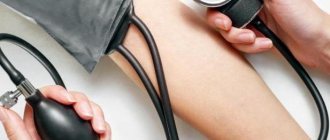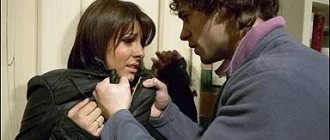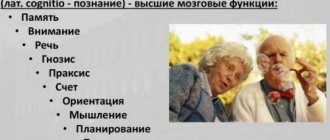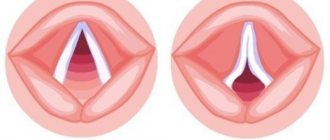Fainting is a temporary loss of consciousness that is associated with impaired brain function. There are many reasons for this illness. Both natural overstrain and serious pathological processes can provoke a short-term “shutdown” of the main node of the body.
Regardless of the factor that provoked fainting, it is unacceptable to ignore it. Even a one-time loss of consciousness is a good reason for a thorough examination of the body.
In today's material we will talk about fainting in adolescents, the reason for their development, the general danger and the principles of therapy. Interesting? Then be sure to read the article below to the end. We assure you that the material presented will be useful to anyone.
Causes
There are a large number of different factors that, one way or another, cause fainting in children and adolescents.
Anemia
Anemia is one of the main causes of loss of consciousness in childhood. This disease most often occurs in late winter or early spring. By this time, the body loses all its vitamins and microelements. If they are insufficiently replenished, the iron content in red blood cells - erythrocytes - decreases. Since iron is contained in hemoglobin, and it delivers oxygen to tissues, brain cells are subject to oxygen starvation. This problem can be eliminated by taking medications containing iron.
Hunger
If your baby does not eat for a long time, then this is the direct cause of fainting. The baby's brain is very sensitive to a lack of glucose. Be sure to take yoghurts, cookies and juice with you if you are going away for a long time.
In addition, frequent and sharp drops in blood sugar levels, which are accompanied by fainting and pre-fainting conditions, may be the first symptom of diabetes. Therefore, do not delay your visit to the pediatrician!
Strong screaming and hysterics
With prolonged hysteria or screaming of the baby, excessive ventilation of the lungs and overexcitation of the nervous system occurs. Therefore, it is better not to bring the baby to this state.
Vaccinations, injections, fear
If the vaccination is given to a very impressionable child, then the result of such a procedure may be fear. And this is the direct reason why the baby faints. Be sure to talk to your doctor before the procedure about your child's tendency to lose consciousness in stressful situations. It may be worth asking a child psychologist about methods for overcoming these fears.
Diseases of the cardiovascular system
A comprehensive examination must be completed in the first year of life. Fainting may be the first sign of a vascular or cardiac pathologist. If the circulatory system and heart are not functioning well (for example, arrhythmia), the brain does not receive the required dose of nutrients and oxygen.
Before falling, the child may feel that the heart is “pounding”, beating as if incorrectly. In such a situation, you should immediately seek help from a specialist.
Reasons specific to teenagers
In teenagers, fainting most often occurs as a result of overwork associated with studying, as well as emotional distress, and lack of sleep. Girls may not feel well when on half-starvation diets. Parents also need to monitor and, if necessary, limit the time a teenager spends on the computer. The immature nervous system of a young person is very sensitive to negative influences.
Symptoms
Syncope is characterized by the following symptoms:
- increased sweating;
- cardiopalmus;
- nausea;
- feeling of “the earth floating away from under your feet”, dizziness;
- pale skin;
- blurred vision.
Types
The most common types of fainting are: neurogenic, cardiogenic, hyperventilation.
Neurogenic fainting conditions are divided into:
- Vasodepressor: occur in case of fear, pain, sight of blood, stuffiness.
- Orthostatic: appear when standing up suddenly, taking antihypertensive drugs, antidepressants and levodopa.
- Fainting due to increased intrathoracic pressure occurs with severe coughing or defecation.
Symptoms
Before fainting, a pre-fainting state occurs. It is accompanied by severe weakness, noise or ringing in the ears, dizziness, and darkening of the eyes.
If such symptoms occur, an attack can be prevented by lying down or sitting with your head between your knees. The fainting state can be short-lived, so you need to take action quickly.
If a child faints and the cause is unknown (for example, there was no stressful situation, prolonged cough, severe pain), then you need to pay attention to additional symptoms during the attack: pale or bluish skin, convulsions or twitching, bad breath, pulse rate . This information will be useful when you see a doctor to make a diagnosis.
First aid
The most important rule is not to get lost and not to panic. You should also follow these tips:
- Place the child in a horizontal position on his back, and place his legs at an angle of 30 degrees (you can put a pillow under them). This position promotes a better flow of blood to the head, therefore, there is more oxygen.
- Give access to fresh air. To do this, unbutton your shirt and loosen the belt on your waist. There is no need to crowd around the child, as there should be fresh air near him. If fainting occurs indoors, then you need to open the windows wide.
- Help your baby come to his senses. You can splash the child’s face with cold water, lightly beat him on the cheeks, give him a sniff of ammonia, or smear his temples with it.
- Do not try to lift your child to his feet immediately after he comes to his senses. He needs to lie down for a while with his legs elevated so that the blood supply to the brain is fully restored.
- Make your child a sweet drink. By drinking juice or sweet tea, your child will begin to recover faster.
Diagnostics
If your baby repeatedly faints, the following specialists will provide you with the help you need:
- Pediatrician;
- Cardiologist;
- Endocrinologist;
- Neurologist.
The extent of the required examination will vary in each specific case. Perhaps the cause will become clear after a routine blood test, or an ECG or a full neurological examination may be needed.
Disturbances in the rhythm of the heart muscle
The cause of fainting in such cases is the body’s inability to constantly compensate for the decrease in blood pressure. In people with cardiac problems, the heart often does not have the ability to increase blood output to compensate for blood pressure during intense physical activity.
This condition is called tension syncope. It often appears after physical activity. The reason is a reduction in the rhythms of the heart muscles immediately after physical exertion with dilated blood vessels. This combination leads to a sharp decrease in blood pressure and the onset of fainting.
A rapid decrease in circulating blood volume is often the cause of a short-term state of fainting.
It happens under the following conditions:
- blood loss from wounds;
- dehydration of the body;
- rapid heartbeat;
- increased sweating;
- diarrhea;
- increased urination;
- pronounced varicose veins;
- cough;
- pregnancy.
In women in the last trimester of pregnancy, the cause of fainting may be that when in a horizontal position, the enlarged uterus compresses the vena cava, resulting in a decrease in venous inflow and cardiac output. At this point, fainting may occur. And when the pregnant woman stands up, the pressure on the inferior vena cava stops and normal blood circulation is restored.
Older men and women may sometimes experience loss of consciousness during or after urination. This usually happens after getting out of bed. The cause of fainting can also be sought in the presence of orthostatic hypotension, the consequence of which is a decrease in circulating blood that occurs at night. Another factor may be increased intrathoracic pressure.
The reasons may include taking diuretic medications. Diuresis may become so pronounced that there is a risk of dehydration.
Treatment
If the examination reveals any serious causes of syncope, it is necessary to treat the underlying disease. A specialist will prescribe adequate therapy.
The child must also perform regulated physical activity, the purpose of which is to train the vascular system and muscles: do gymnastics, swim in the pool, ride a bicycle. If there is no physical activity, your health will deteriorate significantly.
Diagnosis of fainting
If you are prone to fainting, you should undergo an examination. After it, the doctor can determine what disease is causing the fainting, since some diseases pose a serious danger.
Cardiac diseases, in particular aortic stenosis (irregular heartbeat), can be fatal.
The doctor finds out if the patient has chronic diseases and information on taking medications.
One of the diagnostic methods is to reproduce fainting situations under controlled circumstances, for example, a person, under the supervision of a doctor, breathes quickly and deeply. Or the doctor, under the control of heart contractions using a cardiogram, applies pressure to the zone above the carotid sinus (part of the carotid artery, which contains nerve endings and controls blood pressure).
An electrocardiogram (ECG) can detect signs of cardiac and pulmonary disease. Sometimes the doctor monitors heart rhythms using a Holter monitor (the same as an ECG, but heart contractions are measured throughout the day during normal physical activity).
The patient wears this small device throughout the day, and an ECG is recorded. The cause of fainting in this case can be determined by analyzing the disturbance in heart rhythm with the onset of unconsciousness.
The next diagnostic test is echocardiography, which can help identify structural or functional heart diseases.
Tests of the patient's blood may reveal hypoglycemia (not enough blood sugar) or anemia (not enough red blood cells).
To diagnose epilepsy (its symptoms are similar to fainting), clinics use encephalography, a type of study that records the electrical activity of the brain.
Failure of vital protective reflexes
Loss of consciousness is dangerous primarily because in this state the body’s protective reflexes fail; these reflexes are controlled by the brain. If brain functions fail, then reflexes such as swallowing, coughing and gag, which usually prevent foreign bodies from entering the respiratory tract, also fail.
Choking with your own tongue
Another important reflex is responsible for ensuring that when lying on your back, the tongue does not fall back into the pharyngeal cavity. If this reflex were absent, then while sleeping on our backs we would simply suffocate from suffocation with our own tongue. And this is precisely where one of the main dangers of an unconscious state lies. To get a clearer picture of this phenomenon, let's look at the history of first aid: During World War II, first aid manuals contained advice to pull out the tongue of an unconscious person and secure it with a pin. Fortunately, in our time this method of “emergency piercing” is no longer relevant.
Now we know that it is much better and more reliable to prevent retraction of the root of the tongue by throwing back the head. When the head is gently tilted back, the tongue automatically rises. This is a simple and very important resuscitation technique. Place one hand on the forehead and the other on the victim's lower jaw, and tilt his head towards the back of the neck. In the case of infants, it is enough to just slightly raise the chin.
When breathing stops, just the technique of throwing back the head can already start spontaneous breathing. If this does not happen, then open the victim’s mouth, pulling his lower jaw, and examine the oral cavity for the presence of foreign bodies blocking the airways.
Caution: If a spinal injury is suspected, special care is required. If the child is clearly breathing, then in this case there is no need to tilt his head back. Just make sure that your respiratory functions are stable.
Throwing back the head when losing consciousness prevents the tongue from blocking the airway.
Choking by vomit
Vomiting is possible if you lose consciousness. Due to the failure of the swallowing and cough reflexes, the contents of the stomach can enter the windpipe, and therefore into the lungs. Even small amounts of gastric contents can cause significant damage to the lungs, since the stomach produces hydrochloric acid, and the lungs, with the pulmonary alveoli located in them, are one of the most sensitive organs in our body. In this case, a stable lateral position will help, the task of which is to raise the victim’s stomach above his mouth.
Stable side position
With a stable lateral position, a minimal difference in height between the stomach and mouth is ensured, ensuring the outflow of gastric contents through the mouth: vomit does not accumulate in the pharyngeal cavity, but flows out. The illustrations below show a textbook method of giving the victim a stable lateral position. Experience shows that students of first aid courses quickly forget the exact steps to achieve a stable lateral position. But now you know what its essence is: the mouth should be located lower than the stomach. Now you can improvise. If you mix up the side on which you need to bend the leg and turn the child (or adult) onto the wrong side, you will still be able to put the victim in a side position.
Since 2006, both options for stable lateral position are allowed; There is an even simpler method in which the unconscious victim simply turns on his side without placing his arm under the body. In general, any method to achieve the desired goal is allowed.
With a stable lateral position, a height difference is formed between the stomach and mouth, ensuring the outflow of vomit through the mouth.
By the way, whether you lay a child or an adult on the left side or on the right, it doesn’t matter, it will not affect the cardiac activity of the victim.
Prone position for infants
Infants who lose consciousness are placed on their stomachs. The reason for this is that their short arms and legs make it impossible to get them into a stable sideways position.
The child should be placed on his stomach, his head turned to the side and slightly tilted back. Both arms are raised up and placed next to the head. What happens to breathing and blood circulation?
In case of loss of consciousness, breathing and blood circulation are preserved (otherwise we would be talking about cessation of blood circulation and/or breathing).
First you need to check whether the victim is breathing. Then he needs to be given a stable side position or position on his stomach. After this, it is necessary to check that he is breathing once a minute until the ambulance arrives. If these vital functions fail, artificial respiration or cardiopulmonary resuscitation will be required.
Breath test
To check for breathing in an unconscious child, place your ear near the victim's mouth and nose.
Proceed as follows: first inspect the oral cavity for the presence of foreign bodies, for example, chewing gum. Remove the foreign body with your fingers, a handkerchief or a shirt sleeve. Then tilt your baby's head back and bring your ear directly to his mouth and nose. Now you can hear the baby's breathing and feel it on your cheek. In this way, you can feel even a weak air flow.
Bring your ear directly to your baby's mouth and nose.
The task of throwing back the head is to raise the tongue, since if it is retracted, the child, even if the respiratory reflex is preserved, will not be able to inhale.
If no signs of breathing can be detected, first blow air into the child's lungs twice using artificial respiration, and then begin cardiopulmonary resuscitation.
Circulation check
In adults, the pulse is checked at the carotid artery. Since this is difficult for young children, we have to check in other places. In children under kindergarten age, the pulse can be felt with two fingers on the inside of the shoulder. There, the brachial artery passes between the two muscles. The pulse can be checked in both arms. By the way, you can remember this place for another situation: by pressing the brachial artery to the bone, you can stop the bleeding. Try to feel this place on your shoulder now. It is located on the inside of the shoulder between two large muscles - the biceps and triceps.
Starting at about three years of age, the pulse is checked in the carotid artery. To find the right spot, use two or three fingers. Place them on the victim's Adam's apple and slide your fingers into the soft groove between the Adam's apple and the neck muscles (do not move too far to the side). Do not use your thumb to palpate as this will allow you to feel your own pulse. By applying gentle pressure with your fingers, you will feel the beating of the carotid artery. On the other side of the neck it is detected in a similar way. To be honest, this procedure requires some skill, especially since in an emergency there is great excitement. Take your time and take a few seconds to feel your pulse. Check it on both sides. Recently, first aid recommendations even sometimes advise not to check the pulse, since with insufficient experience this procedure can take too much precious time. Accordingly, resuscitation measures are recommended to begin if the child cannot detect signs of life: there is no breathing or reactions; perhaps the skin takes on a bluish tint.
In an emergency, do not waste time checking your pulse.
How to recognize loss of consciousness?
A child is unconscious if he does not respond to speech addressed to him and cannot be awakened. At first glance, loss of consciousness is similar to a state of sleep, but there is a fundamental difference: a sleeping child can be woken up. Try to encourage the child, talk to him or specially pinch him in a safe place, for example, on the inside of the shoulder. If you've never tried this before, pinch yourself in this area and you will notice how sensitive it is.
First measure: stir up the child, talk to him and pinch him












